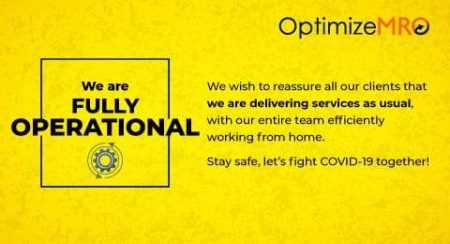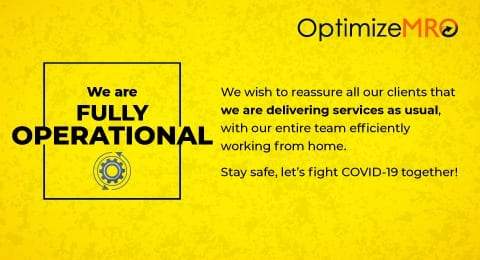
The strategic management of a company’s relationships with its suppliers is known as supplier relationship management (SRM). While business leaders are increasingly aware of the need to have a strong supplier relationship management strategy, you can still enjoy a significant competitive advantage due to the number of businesses without one. Good supplier relationship management creates and sustains relationships that are mutually beneficial for both the supplier and the organisation.
For many years, purchasing was viewed more as a transactional role that involved negotiating a supplier’s pricing and delivery schedule, setting up a contract, and then putting it on hold until it was time to renew. Cost-cutting was its one-sided fixation, and as a result, it frequently overlooked opportunities to add more value. It was then. Companies are now aware of the many benefits of supplier relationship management, including how building mutually beneficial relationships with key strategic suppliers can result in a competitive advantage for the business through supplier-led product innovation, lower supply risk, a leaner supply chain, lower long-term costs, and more efficient procure-to-pay processes. As a result, a supplier management programme is currently implemented by all best-in-class procurement organisations.
To optimise the value of contacts with major strategic suppliers over the course of the partnership, top-tier procurement teams now proactively plan and rigorously manage those interactions.
Suppliers’ and supply professionals’ transactional interactions have progressively given way to more cooperative alliances. These days, procurement teams want to get a lot of value for the company out of their supplier relationships. But because of inadequate strategy and execution, many firms are struggling to fully reap the benefits of supplier management programmes. A corporation may frequently deploy a supplier relationship management strategy in the hopes of seeing results quickly, only to quit it midway through or continue working on it in vain.
Supplier management must be viewed by businesses as a long-term process requiring a cross-functional strategy, integrated governance, and creative ways to track and measure value. How can businesses be sure their supplier management initiatives are producing the optimum results?
The following are some of the top supplier relationship management techniques we recommend our clients to use:
Business Strategy and Supplier Management Strategy Alignment
Lack of alignment between the supplier relationship strategy and the larger business plan results in resource waste on a project that could not reflect the enterprise’s long-term business goals. This may result in the supplier relationship management programme losing priority on the procurement agenda. Alignment is best achieved by converting business strategy into supplier relationship management goals.
An effective supplier segmentation strategy and relevant strategies specific to suppliers
Based on their influence on the business or the complexity of the supply market, businesses divide up their suppliers. Suppliers are divided into four categories based on these two criteria: strategic, bottleneck, leverage, and regular suppliers. However, this segmentation frequently results in low ROI (Return on Investment) and execution problems. The segmentation can be improved for a successful supplier relationship management programme by including a third criterion that gauges the organisation and supplier’s compatibility over the long run.
Governance Model Development for Strategic Suppliers
A distinct governance mechanism that enables procurement to track a relationship from the start should be built when the suppliers have been segregated. Who, for instance, is responsible for daily relationship management? When exactly does a senior executive need to become involved? so forth. To make sure that performance satisfies business objectives, however, it is crucial for both buyer and supplier organisations to commit resources. While transactional suppliers need little regulation and monitoring, strategic suppliers demand more of both.
The development of communication skills with suppliers
Building a mutually beneficial relationship with a supplier begins with treating them as a partner and keeping a line of communication open. One of the most essential elements of supplier relationship management is this. This necessitates feedback sessions as well as open and transparent interactions with suppliers. The level of the supplier’s trust is unfortunately undermined by the fact that many members of the procurement team who manage supplier relationships frequently receive little to no training in the essential leadership and interpersonal skills. Furthermore, corporate stakeholders frequently lack the requisite business acumen to forge solid, profitable connections.
To fill any gaps in these skill sets, supplier managers should be carefully chosen and given the necessary leadership and interpersonal training. Only then can they be trusted to carry out their duties.
To foster a sense of confidence between the two teams, working interactions between the procurement teams and suppliers should be casual. There should be more touchpoints to increase the chances of information transfer between the two teams.
Methodologies for measuring the impact of SRM initiatives
To monitor the program’s health, recognise its genuine value addition, give it the credit it deserves, and secure future investment, innovative, finance-tested approaches for measuring the monetary value supplied by supplier relationship management programmes must be established.
If something is worthwhile, it should be done properly, as the adage goes. This is certainly true of the strategic supplier relationship management approach. A company’s success or failure in the tactical and transactional sphere can be determined by how well it is done as opposed to how poorly it is done or not done at all.
Conclusion
There are many benefits to effective supplier management, and the profits may be substantial. A 360-degree evaluation of each process activity is necessary to develop and execute best practices that use all suppliers and stakeholders. The best techniques for the goal of good supplier relationship management are to keep things organised while promoting stronger collaboration. By continuously monitoring all facets of supplier management, procurement may increase overall success (communication, information, identification, performance, planning, supply risk, and more). These best practices would also contribute to raising the total value of the sourcing procedure.
Accelerate your time-to-value with a robust Supplier Relationship Management (SRM) solution by OptimizeMRO. It provides a 360-degree view of procurement and supplier engagement. Let us take your supplier management from manual and reactive to strategic and proactive.


